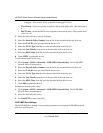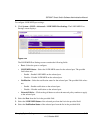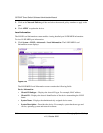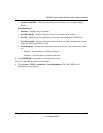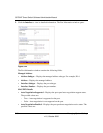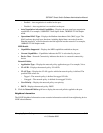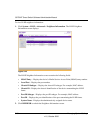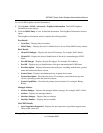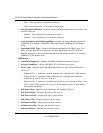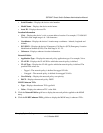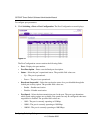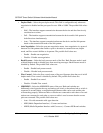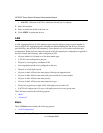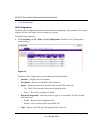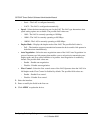
GS700AT Smart Switch Software Administration Manual
3-67 Managing System Settings
v1.0, October 2008
– True – Auto-negotiation is supported on the port.
– False – Auto-negotiation is not supported on the port.
• Auto-Negotiation Enabled – Displays the port speed auto-negotiation active status. The
possible values are:
– Enabled – Auto-negotiation is enabled on the port.
– Disabled – Auto-negotiation is not enabled on the port.
• Auto-Negotiation Advertised Capabilities – Displays the port speed auto-negotiation
capabilities. For example, 1000BASE-T half duplex mode, 100BASE-TX full duplex
mode.
• Operational MAU Type – Displays the Medium Attachment Unit (MAU) type. The
MAU performs physical layer functions, including digital data conversion from the
Ethernet interfaces’ collision detection and bit injection into the network. For example,
100BASE-TX full duplex mode.
MED Details
• Capabilities Supported – Displays the MED capabilities enabled on the port.
• Current Capabilities – Displays the MED TLVs advertised by the port.
• Device Class – Displays the LLDP-MED endpoint device class. The possible device
classes are:
– Endpoint Class 1 – Indicates a generic endpoint class, offering basic LLDP services.
– Endpoint Class 2 – Indicates a media endpoint class, offering media streaming
capabilities as well as all Class 1 features.
– Endpoint Class 3 – Indicates a communications device class, offering all Class 1 and
Class 2 features plus location, 911, Layer 2 switch support and device information
management capabilities.
• PoE Device Type – Displays the port PoE type. For example, Powered.
• PoE Power Source – Displays the port’s power source.
• PoE Power Priority – Displays the port’s power priority.
• PoE Power Value – Displays the port’s power value.
• Hardware Revision – Displays the hardware version.
• Firmware Revision – Displays the firmware version.
• Software Revision – Displays the software version.



